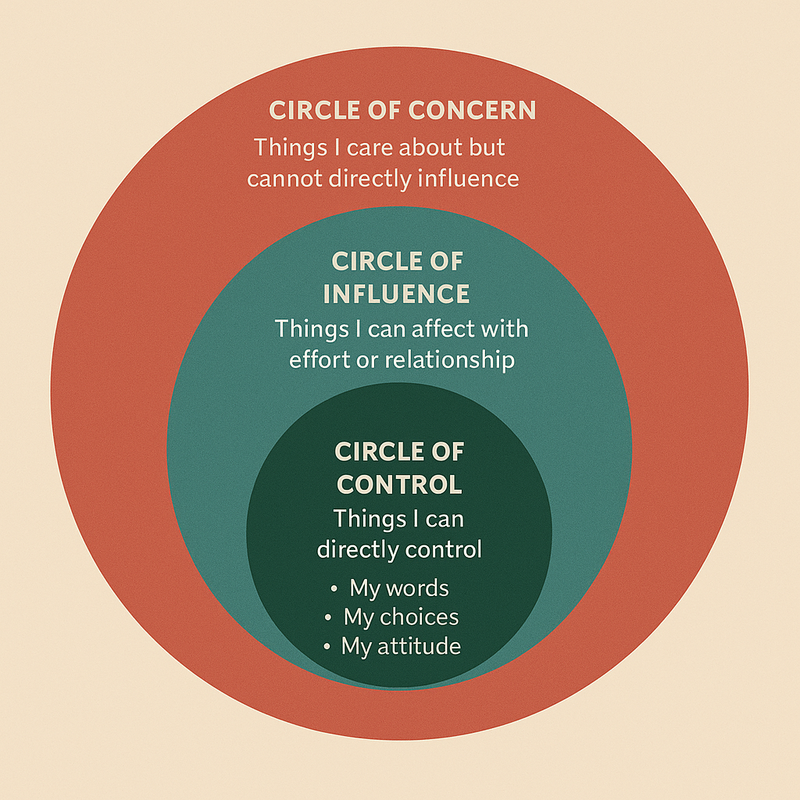Join our Nonprofit Good News-Letter
Why Proactive Strategy Beats Reactive Stress for Today’s Nonprofit CEOs

While I was away on vacation and dealing with some personal health issues, Congress passed and the President signed into law a sweeping federal budget reconciliation package and a recission bill that cut $9 billion from current-year expenditures. I will be posting a lot on that, but there is a more basic question to answer right now: What should a nonprofit CEO be focusing her attention on right now, in times of unprecedented chaos for the sector?
The first habit in one of my favorite books, Stephen Covey’s The 7 Habits of Highly Effective People, is “be proactive.” In that book, he relies on one of my favorite diagrams, which teases out what people should focus their attention on to improve themselves and their situations. He speaks of a circle of concern and circle of influence. In my addition (below), I add a third zone – one’s zone of control – which Covey mentions but doesn’t include. Here’s my modification of that diagram:

How would Covey recommend a nonprofit CEO divide her attention right now? The operation of a nonprofit would primarily fall within the CEO’s Circle of Influence, with certain aspects squarely inside the Circle of Control, and others extending toward the Circle of Concern. Here’s how Covey would likely break it down:
These are elements of the nonprofit’s operation that the CEO can directly manage and decide upon, day to day. Covey would view these as the nonprofit CEO’s core realm of personal responsibility and proactivity.
This is your daily work, plus how you think about the world, the words you use, your choices, and your attitude. They are critically important, but they are also only a start.
This includes areas the CEO can affect through relationships, strategy, and initiative—what Covey would define as spaces where positive, proactive energy can create results over time.
This is where Covey emphasizes investment of energy: focusing on these areas expands your influence and strengthens the organization’s reach and effectiveness.
These are operational concerns the CEO may care deeply about but cannot control or directly change—often external forces or systemic issues. Covey warns not to waste time dwelling here reactively.
Covey’s recommendation: acknowledge these issues, but act only where they intersect with your Circle of Influence.
I think Covey would tell a nonprofit CEO: “Focus your leadership and strategic energy in the Circle of Influence. Grow that influence by consistently aligning your direct actions (Circle of Control) with the values and mission of your organization. Don't burn out worrying about what you can't control—lead by example and let that influence ripple outward.” That’s sound risk management advice, and we will be exploring many of its aspects in upcoming posts.